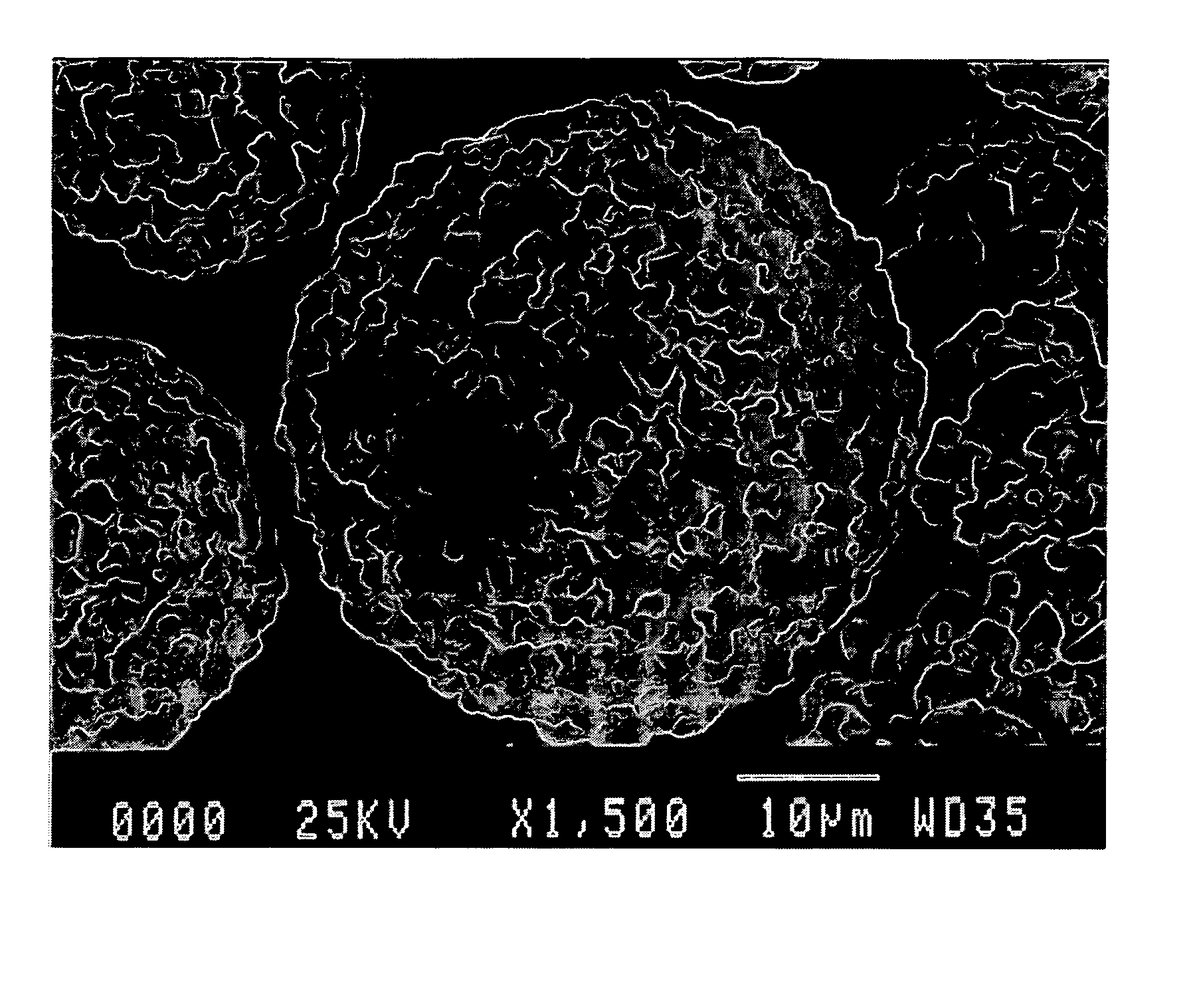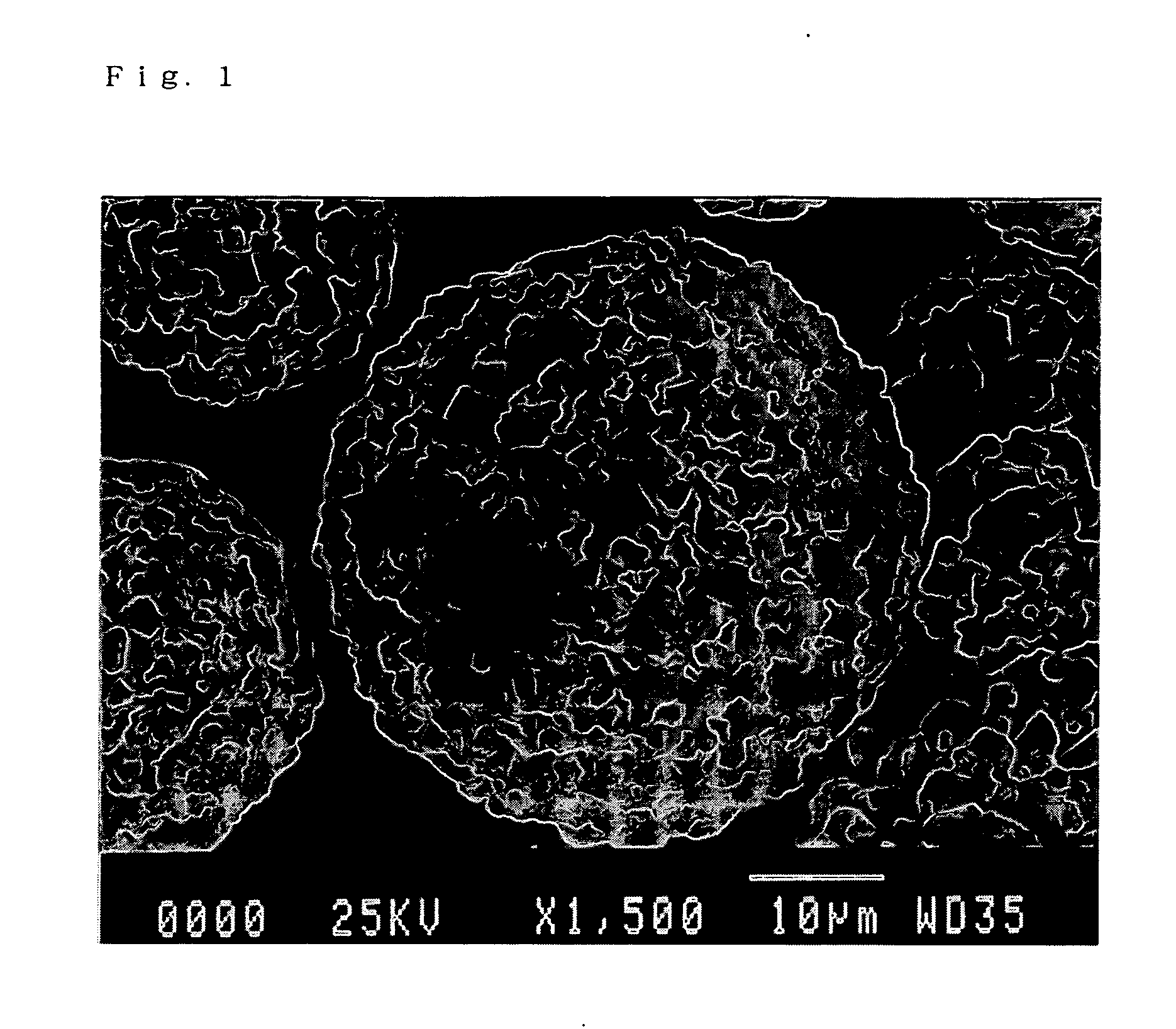Ferrite core material for resin-filled type carrier, resin-filled type carrier, and electrophotographic developer using the carrier
a technology of electrophotographic developer and carrier, which is applied in the field of ferrite core material for resin-filled type carrier, resin-filled type carrier, electrophotographic developer using the carrier, can solve the problems of reducing the surface area of the available carrier, reducing the friction chargeability of toner particles, etc., to achieve excellent fluidity, low true density, and long life
- Summary
- Abstract
- Description
- Claims
- Application Information
AI Technical Summary
Benefits of technology
Problems solved by technology
Method used
Image
Examples
example 1
Example 1a
[0154] Raw materials were weighed so as to become MnO: 35 mol %, MgO: 14.5 mol %, Fe2O3: 50 mol % and SrO: 0.5 mol %, mixed with water, and then crushed by a wet media mill for 5 hours to obtain a slurry. The obtained slurry was dried by a spray drier to obtain spherical particles. For adjusting the void fraction and continuous void degree, manganese carbonate as the MnO raw material and magnesium hydroxide as the MgO raw material were used. The particles were adjusted for the particle size, and heated at 950° C. for 2 hours for calcination. Then, for obtaining a suitable fluidity with a comparatively high void fraction, the calcined material was crushed for one hour by a wet ball mill using stainless beads of ⅛ inch in diameter, and further crushed for 4 hours using stainless beads of 1 / 16 inch in diameter. This slurry was added with a dispersant in an appropriate amount, and for the purpose of securing the strength of particles to be granulated and adjusting the void fr...
example 1b
[0155] A core material of ferrite particles was obtained as in Example 1a, but using trimanganese tetraoxide instead of manganese carbonate, the binder to be added of 0.8 wt. %, and zirconia beads of 0.5 mm instead of stainless beads of 1 / 16 inch in diameter, and holding and sintering at a temperature of 1,150° C. at an oxygen concentration of 0.5 vol % for 4 hours in an electric furnace.
example 1c
[0156] A core material of ferrite particles was obtained as in Example 1a, but using manganese dioxide instead of manganese carbonate, and the binder to be added of 0.5 wt. %, and holding and sintering at a temperature of 1,200° C. at an oxygen concentration of 1.5 vol % for 4 hours in an electric furnace.
PUM
 Login to View More
Login to View More Abstract
Description
Claims
Application Information
 Login to View More
Login to View More - R&D
- Intellectual Property
- Life Sciences
- Materials
- Tech Scout
- Unparalleled Data Quality
- Higher Quality Content
- 60% Fewer Hallucinations
Browse by: Latest US Patents, China's latest patents, Technical Efficacy Thesaurus, Application Domain, Technology Topic, Popular Technical Reports.
© 2025 PatSnap. All rights reserved.Legal|Privacy policy|Modern Slavery Act Transparency Statement|Sitemap|About US| Contact US: help@patsnap.com


